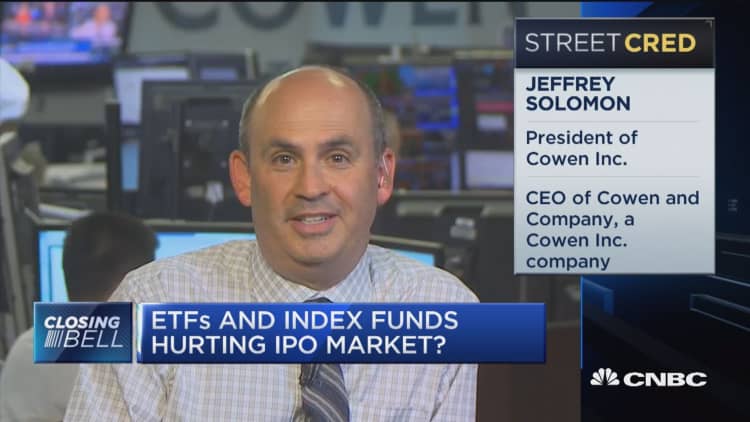For the true story on the U.S. economy, small-cap stocks' sluggish performance may be a better guide, according to Jefferies.
Stocks with small market capitalizations reported a 0.5 percent drop in earnings per share in the second quarter, versus 9.9 percent growth for large-cap stocks, Steven DeSanctis, equity strategist, and his associate Miles Bredenoord said in a Monday note.
The gap of 10.4 percentage points between small-cap and large-cap earnings growth marks the largest since the financial crisis, the report said. "The earnings difference was massive and keeps us cautious," they wrote.
Earnings have been much better for large-cap stocks lately
Source: Jefferies
The latest government report showed U.S. economic growth of 3 percent in the second quarter, the fastest annualized rate in more than two years. However, other reports, such as retail sales and nonfarm payrolls, have been soft. Billionaire Warren Buffett said in a CNBC interview in late August that the economic growth rate feels more like 2 percent than 3 percent.
If the economy did grow at 3 percent, "we think small-cap earnings would be up double digits," the Jefferies analysts said. "The large difference can't last too long in our opinion, and thus the issue is whether or not large [cap earnings growth] gets worse or small gets better."
Global growth behind the divergence?
Major U.S. stock indexes hit record highs Monday, while the small-cap index traded about three-fourths of a percent below its record, set on July 25.
Large-cap stocks are "over-earning thanks to the weaker dollar and better global growth and the fact that the U.S. economy is not as strong as the GDP number implies," the analysts said. "Single-digit earnings growth does not support where multiples are today."
Small-cap stocks tend to focus more on the domestic U.S. market, and many analysts had expected the stocks to benefit the most under the Trump administration from tax reform and the strong U.S. dollar. But new legislation on taxes has stalled, while the U.S. dollar index has dropped to its lowest in more than two years.
President Donald Trump predicted his policies would result in growth of 3 percent or more, despite many economists' doubts.
The Atlanta Fed's GDPNow model forecasts growth of just 2.2 percent for the third quarter.
WATCH: Small companies need to access capital markets



